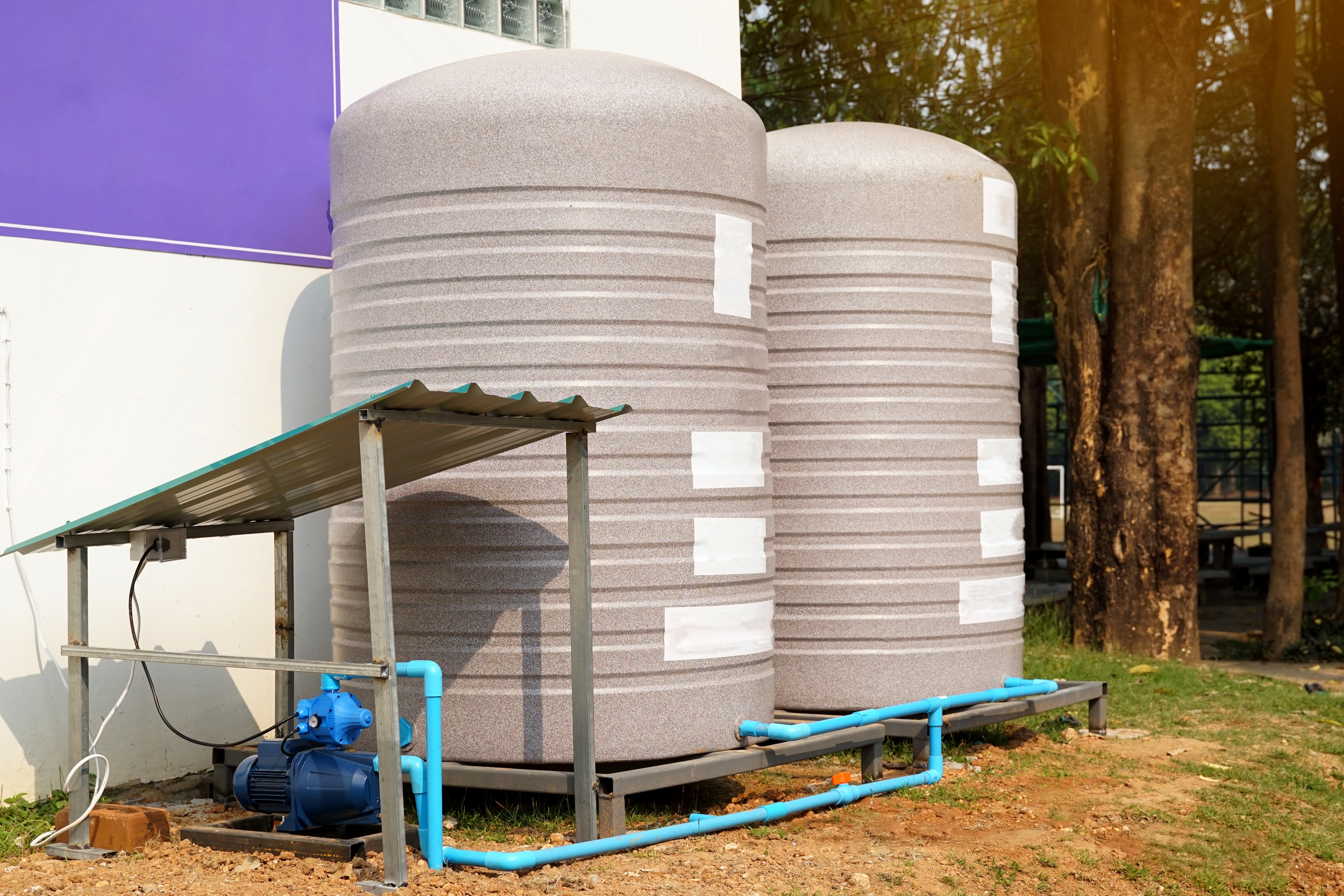Introduction
Explore different types of water tanks for Indian homes. From plastic to RCC, learn which storage solution best fits your needs, space, and budget.
In India, water tanks are like those extra relatives at a wedding - absolutely essential but choosing the right one can be tricky. Whether you're building a new home or upgrading your storage game, let's dive into the world of water tanks without getting our feet wet.
Types of water storage:
1. Overhead Tanks

The ones you regularly see in different parts of India in their unique shapes and sizes. These are installed on the roof. Overhead tanks are a staple in Indian households for maintaining a steady water supply.
• Types:
o Various materials like plastic, stainless steel, or RCC tanks are commonly used for overhead storage.
• Advantages:
o Gravity-based water flow eliminates the need for continuous pumping.
o These are easy to monitor and refill.
• Challenges:
o They require a sound structure for installation.
o The biggest issue can be algae growth if not cleaned regularly and hence it requires a proper cleaning.
2. Underground Water Tanks

These tanks are buried below ground level and are often used for large-scale water storage in commercial spaces or areas with space constraints.
• Types:
o RCC, plastic, or fiberglass tanks are the common choices.
• Advantages:
o This is widely used as it saves surface space and keeps water cool.
o Very good for rainwater harvesting systems.
• Challenges:
o Installation and maintenance are labour-intensive.
o It is prone to seepage or contamination if it is not sealed properly.
3. Loft Tanks

These are compact tanks installed inside homes, typically in the loft area. IT can be ideal for small-scale water storage, especially for drinking water.
• Features:
o It is made of plastic or stainless steel.
o The capacity ranges from 100 to 500 liters.
• Advantages:
o Helps in space-saving and is easy to install.
o It can provide a backup water supply for kitchens or bathrooms.
• Challenges:
o Limited storage capacity.
Types of water tanks:
1. Plastic/Polyethylene Water Tanks

This is the most common and widely used type in Indian households. Made from high-density polyethylene (HDPE), these tanks are lightweight and durable.
• Features:
o These are available in various shapes (cylindrical, rectangular) and sizes (from 200 litres to 10,000+ litres).
o They are UV-resistant and belong to the food-grade material and hence is considered a safe water storage.
• Advantages:
o Lightweight and easy to install.
o Low maintenance and resistant to rust and corrosion.
o Affordable and long-lasting.
• Challenges:
o They have limited durability compared to concrete or metal tanks.
o These tanks can crack under extreme pressure or impact.
2. RCC (Reinforced Cement Concrete) Water Tanks

These tanks are usually built on-site and are known for their sturdiness. Common in both residential and commercial spaces, RCC tanks are often underground.
• Features:
o These tanks can be in customizable size and their capacity is usually based on specific requirements.
o This is known for its excellent long-term water storage.
• Advantages:
o Extremely durable and environmental changes do not affect them
o These are suitable for both underground and overhead installations.
• Challenges:
o The initial costs are high, and this requires special labour skills for construction.
o It can be prone to leakage if not constructed properly.
3. Stainless Steel Water Tanks

This is a premium option and these tanks are increasingly popular for their sleek look and durability.
• Features:
o These are non-corrosive and very hygienic, thus ensuring the water remains clean and safe.
o These tanks are typically used in places that require high water purity standards.
• Advantages:
o Long-lasting and they are easy to clean.
o They are also resistant to rust, UV rays, and environmental wear.
• Challenges:
o Can be very expensive compared to plastic or RCC tanks.
o Very limited size options can be a dampener, and these are heavier than plastic tanks.
4. Fiberglass Water Tanks

Now, these are made from reinforced fiberglass, these tanks are relatively newer to the Indian market but gaining traction for their robustness.
• Features:
o These are lightweight yet strong, resistant to corrosion and chemical reactions.
• Advantages:
o They have a high tensile strength and ensures durability.
o Mostly used for industrial purposes where chemical resistance is needed.
• Challenges:
o Very costly and less common, so getting replacements or repairs can be tricky.
5. Collapsible/Portable Water Tanks

These are flexible tanks made of strong polymer fabric and are ideal for temporary water storage.
• Features:
o The tank can be folded and is easy to transport.
o This is predominantly used for emergency storage, agriculture, or construction sites.
• Advantages:
o Lightweight, portable, and space-saving.
o It is convenient to quickly set it up and easy to dismantle.
• Challenges:
o They have limited capacity and are not ideal for permanent installations.
o Because of repeated transportation and handling these may require frequent repairs for punctures or leaks.
Which Water Tank is Right for You?

The choice depends on several factors:
• Purpose:
For drinking water, stainless steel or plastic tanks are best. For large-scale storage, RCC or underground tanks are ideal.
• Space Availability:
Overhead tanks for homes, underground for larger establishments.
• Budget:
Plastic tanks are affordable; stainless steel is premium but long-lasting
• Durability Needs:
RCC and stainless-steel tanks offer unmatched longevity.
In conclusion
Like most stuff, when it comes to water storage, one size doesn’t fit all. From compact loft tanks to sturdy RCC options, there is a diverse range to meet every need. One has to consider requirements carefully and think long-term. Never forget regular maintenance—it’s the secret medicine to keep your water tank (and your water) in top shape.
Related articles
Sign up for the newsletter
If you want relevant updates occasionally, sign up for the private newsletter. Your email is never shared.

















